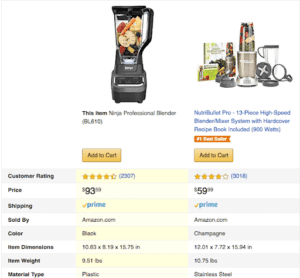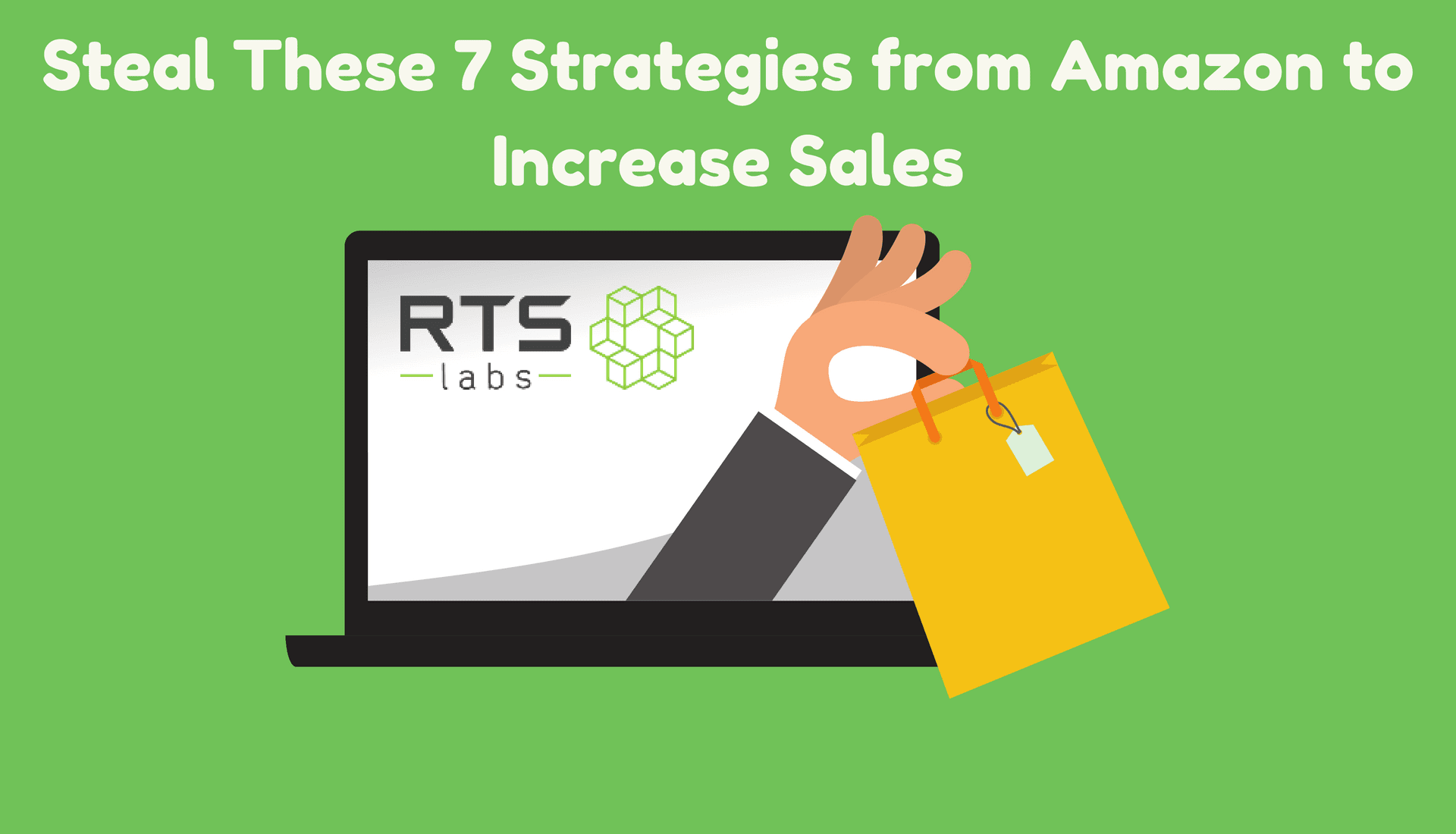What services doesn’t Amazon offer these days? With so many choices and so many access points – Amazon Prime, Amazon Alexa, Amazon Prime Now, Amazon Subscribe and Save, Amazon Dash Buttons – Amazon has disrupted retail AND disrupted human retail behavior. Our expectations are higher now, and that is a large part of what’s driving competition among retailers – both online and in brick-and-mortar spaces. Could using these 7 strategies retailers can learn from Amazon to increase sales really make you more competitive, too?
It’s hard to refute the impact Amazon has had on our shopping habits and on the global economy as a whole. In fact, there’s a name for it: the Amazon Effect. And, while consumers don’t buy everything on Amazon, it’s hard not to be worried about losing sales if you’re a retailer. A recent online shopper’s survey done by NPR had some interesting revelations about America’s spending habits.
- 92% of shoppers surveyed have made a purchase on Amazon.
- 40% say they buy something on Amazon once a month or more often.
- Amazon was the top search place for items when shopping online.
Despite these astounding numbers, a 2018 U.S. Census will tell you only 10% of total U.S. retail dollars are ecommerce sales. That means while Amazon’s popularity should have retailers concerned, there’s still a lot of online revenue to be won. If you have an ecommerce business, you already know the struggle is real. But don’t accept defeat! Take notes from Amazon and implement these 7 web strategies to gain and keep customers.
1. Make user experience a priority
Have you ever had a hard time navigating Amazon? Neither have we. That’s because Amazon takes UX (user experience) very seriously. They have an entire team of UX people constantly improving and changing the site.
Amazon makes it easy not only to find the products you’re looking for but also to comparison shop and find the perfect item – without leaving its website! Consider these features:
- The ability to share a product link with someone else for a second opinion
- A star rating of the product with the number of reviews it has – by rank
- A product comparison chart of similar items
- Add to cart buttons and “buy with one click” options
- Its own internal product rating and labeling system that displays things like “Prime eligible” and “Amazon’s Choice”

Amazon is so good at UX, they wrote a book about UX – that they sell on Amazon!
While you may not be able to fund an entire staff of UX people, you should take UX seriously. It’s crucial in the internet-driven world in which we live. Amazing user experiences can increase conversions, increase total sales at checkout, and keep users coming back for more. With so much competition out there, it’s easy to lose a customer or user because they can’t find what they need, have problems at checkout, or get frustrated with your website’s functionality.
Invest in the UX of your website by spending time testing features, moving buttons, tweaking copy, and analyzing the results. Never ever, ever stop testing your website or app.
2. Be passionate about customer service
It’s extremely easy to return or exchange items, leave feedback, or do research on any product Amazon sells – without even talking to a human being. If a human being is what you want, you can talk to an Amazon representative in a few different ways, including on social media. (Just shout out to @AmazonHelp on Twitter.)
If you have a problem, the solution is delivered pretty quickly through an easy and seamless experience. Amazon’s amazing customer service makes the risk of purchasing the wrong thing, or a bad product, pretty low.
Amazon is not only great at customer service, they’re proactive about it. They save you the hassle of trying to contact someone with features like package tracking, product research, and more. Even Alexa is on the team to help you out!

3. Get your mobile website right
Smartphones top the list as one of the most quickly adopted consumer technologies. The more tasks we can get done with them (including shopping!), the more important having a mobile-first website will be. According to Pew Research, 51% of U.S. adults report making purchases with their phones.
Our on-the-go culture wants things as soon as possible. If consumers have to be at a computer to make a purchase on your website, you’re likely losing customers to Amazon. These days, you have to go beyond mobile responsive websites and design a truly mobile experience. One that’s made for mobile users only. One that’s intuitive and smooth and helps users feel confident as they tap “Order Now.”
4. Be social and make your products shareable
Can you share a link to the product you’re thinking of buying with the click of a button? You can on Amazon. You can send that link via text message, email, or even share it on social media. There are lots of social and shareable features baked into the user experience at Amazon.com.
Beyond the social media and link sharing aspects, Amazon reviews and questions have created a community of their own. There are hundreds of reviews for many of their products, and there’s an entire forum where customers can ask questions. You have real consumers talking about real-life experiences with these products. Whenever you can get people interacting with each other on your website and talking with each other about the products you’re selling, you’re creating a strong impression in those people. They’ll remember the interactions they had and come back for help, answers, and, yes, more products.
How social is your ecommerce site? Can users share products with each other with ease? Can they add things to a wishlist or hop on a forum to ask product questions? Any combination of these features is likely to increase your sales.
5. Beef up your credibility
Consumers are still wary of websites they’ve never heard of and products no one they know has used. Beyond the fact that Amazon is, well, Amazon, there are a lot of ways Amazon gives credibility to the products it sells.
Amazon reviews make it easy for consumers to be informed and do product research without leaving the site. Seeing a five-star rating on a product again and again makes you a lot less leery of spending your money because Amazon customers have given it credibility. Clearly displaying product reviews can significantly improve the conversion rate of a product page.
Another great way to reassure online shoppers is by adding features like secure checkout badges or “as seen on [insert popular website or tv show]” calls to action. The more credible you seem, the more likely you are to get the sale.
6. Bake in a little AI
Amazon tracks every move you make on its site. Your search history, cart abandonments, frequent purchases … everything. There are some very sophisticated algorithms that are learning your habits in order to sell more products, suggest upsell items, send you email prompts, and deliver a personalized home screen when you log on.
Artificial intelligence (AI) helps marketers deliver personalized experiences to each shopper in a very efficient way. AI is an extremely smart way to apply the latest technology to ecommerce.
7. Stay ahead of the curve
Amazon Alexa changed the IoT (Internet of Things) as we know it. Amazon Prime Now changed the way we shop – opting to skip that trip to the store and just have stuff delivered to us in two hours or less. Amazon Wardrobe is taking a cue from style subscription businesses by providing a “try before you buy” option. Amazon is always innovating and thinking ahead of the curve. That innovation is motivated by a strong desire to anticipate the needs of their customers and then deliver irresistible and easy solutions.
You don’t have to have the capital Amazon has in order to be as innovative as they are. To be truly innovative, you have to have a deep understanding of your customers. Then, you can anticipate their needs.
Once you have that understanding, you can get creative about how you answer those needs. Offering amazing products and services is the first step. Delivering stellar customer service and experiences that delight is the next. There are plenty of ecommerce businesses that are soaring right now. Pay attention and learn to do what they do – but in your own, unique way.
If you’re a retailer, don’t get squashed by the “big guy”. Get data. Data is the key to unlocking hidden insights about your target audience – and anticipating their deepest needs. See how we used data to help one retailer increase sales by 24%.






